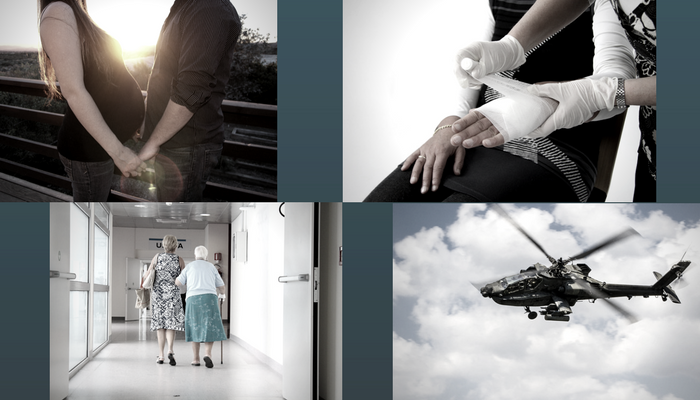The New York State Paid Family Leave Program takes effect January 1, 2018.
In an earlier post, I described which employees would be eligible to take paid family leave. This time, I’m writing about the circumstances when an eligible employee can take leave.
(Watch my FREE New York Paid Family Leave webinar!)
Caring for a Family Member with Serious Health Condition
Eligible employees may take leave to participate in providing care, including physical or psychological care, for a family member of the employee made necessary by a serious health condition of the family member.
Unlike the federal Family and Medical Leave Act (FMLA), New York’s Paid Family Leave Benefits Law does not apply to an employee’s own serious health condition.
Family Member
“Family member” means a child, parent, grandparent, grandchild, spouse, or domestic partner.
“Child” means a biological, adopted, or foster son or daughter, a stepson or stepdaughter, a legal ward, a son or daughter of a domestic partner, or the person to whom the employee stands in loco parentis.
“Parent” means a biological, foster, or adoptive parent, a parent-in-law, a stepparent, a legal guardian, or other person who stood in loco parentis to the employee when the employee was a child.
“Grandparent” means a parent of the employee’s parent.
“Grandchild” means a child of the employee’s child.
“Domestic partner” includes a person at least eighteen years of age (other than a close blood relative) who is dependent upon the employee for support as shown by either unilateral dependence or mutual interdependence, as evidenced by a nexus of factors including, but not limited to, common ownership of real or personal property, common householding, children in common, signs of intent to marry, shared budgeting, and the length of the personal relationship with the employee.
Serious Health Condition
“Serious health condition” means either:
- an illness, injury, impairment, or physical or mental condition that involves: inpatient care in a hospital, hospice, or residential health care facility; or
- continuing treatment or continuing supervision by a health care provider.
The Workers Compensation Board’s paid family leave regulations define the components of serious health condition in much more detail.
I discuss this more in my paid family leave webinar.
Bonding with a New Child
Eligible employees may take leave to bond with the employee’s child during the first twelve months after the child’s birth, or the first twelve months after the placement of the child for adoption or foster care with the employee.
An employee may take family leave before the actual placement or adoption of a child if an absence from work is necessary for the placement for adoption or foster care to proceed.
An employee’s right to take family leave for a birth expires at the end of the consecutive 52-week period beginning on the date of the birth.
An employee’s right to take family leave for adoption or foster care expires at the end of the consecutive 52-week period beginning on the earlier of: (1) the date of the placement or (2) the date of the first day of leave taken in connection with the placement.
Note: beginning January 1, 2018, otherwise eligible employees may take family leave during the first 12 months after birth, adoption, or foster placement of a child, even if the birth, adoption, or placement occurred before January 1, 2018.
Arising Out of a Qualifying Exigency Related to a Family Member’s Active Military Duty
Eligible employees may take leave because of any qualifying exigency as interpreted under the FMLA, arising out of the fact that the spouse, domestic partner, child, or parent of the employee is on active duty (or has been notified of an impending call or order to active duty) in the armed forces of the United States.
The U.S. Department of Labor has identified nine categories of qualifying exigencies:
- Issues related to short notice deployment
- Attending military events and related activities
- Certain childcare and related activities arising from the military member’s covered active duty
- Certain activities arising from the military member’s covered active duty related to care of the military member’s parent who is incapable of self-care
- Making or updating financial and legal arrangements to address a military member’s absence while on covered active duty
- Attending counseling for the employee, the military member, or the child of the military member when the need for that counseling arises from the covered active duty
- Taking up to 15 calendar days of leave to spend time with a military member who is on short-term, temporary Rest and Recuperation leave during deployment
- Certain post-deployment activities within 90 days of the end of the military member’s covered active duty
- Any other event that the employee and employer agree is a qualifying exigency
Learn More About New York Paid Family Leave
Employers will need to know more than which employees are eligible and when they can take paid family leave. They also need to know, for example, how much leave is available and what notices employers must give to employees. Stay tuned for more posts about the New York Paid Family Leave Program.
Remember, I am conducting webinars to assist employers with New York Paid Family Leave. Watch the first webinar here and get more information about the next one!
